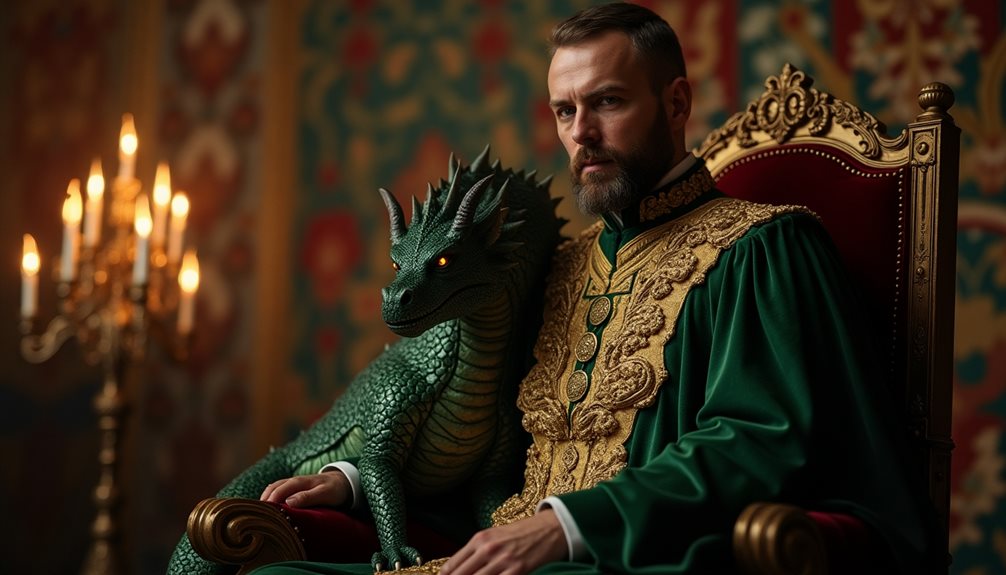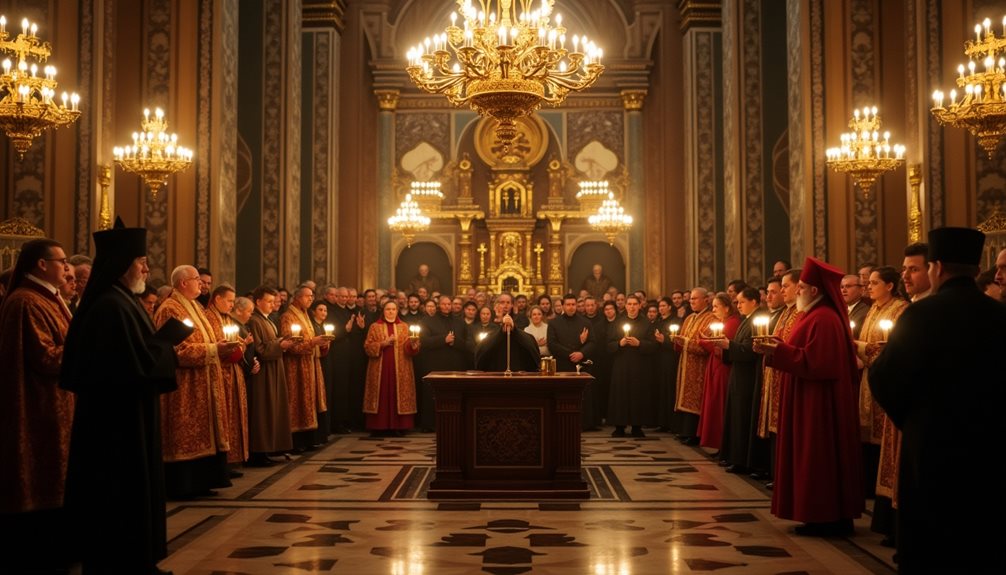You’re about to explore the fascinating history of Beef Stroganoff, a dish that dates back to 19th century Russia and boasts a legacy of elegance and cultural depth. Imagine the fusion of French culinary techniques and Russian ingredients, all orchestrated under the patronage of the affluent Stroganov family. With its tender beef, creamy sauce, and touch of sour cream, it’s more than just a meal—it’s a symbol of Russian sophistication and hospitality. Curious about how this iconic dish evolved and why it holds such cultural significance? Let’s uncover the layers behind this culinary masterpiece.
Origins in 19th Century Russia

Beef Stroganoff, a dish many hold dear, traces its roots back to the opulent kitchens of 19th century Russia. During this period, culinary trends in Russia were heavily influenced by French cuisine, a reflection of the era’s fascination with Western European culture. You’d find Russian aristocrats often employing French chefs, leading to a blend of Russian ingredients and French techniques. This fusion gave birth to Beef Stroganoff, combining tender beef, sautéed mushrooms, and onions with a rich, creamy sauce.
Beef Stroganoff Ingredients:
– 1 lb beef tenderloin
– 1 onion
– 8 oz mushrooms
– 2 tablespoons flour
– 1 cup beef broth
– 1 cup sour cream
– 2 tablespoons Dijon mustard
– Salt and pepper, to taste
– Butter or oil, for cooking
Preparation:
1. Slice the beef tenderloin into thin strips.
2. In a pan, sauté onions until translucent. Add mushrooms and cook until golden.
3. Remove onions and mushrooms from the pan and set aside.
4. In the same pan, melt butter or heat oil, then brown the beef strips on high heat. Season with salt and pepper.
5. Reduce heat to medium and sprinkle flour over the beef. Stir well.
6. Pour in beef broth and bring to a simmer until the sauce thickens.
7. Stir in sour cream and Dijon mustard, then add the onions and mushrooms.
8. Cook for a few more minutes until heated through. Serve with noodles or rice.
As you explore this dish’s origins, consider the culinary trends of the 19th century, which emphasized refinement and elegance. The use of sour cream in Beef Stroganoff was particularly innovative, reflecting a distinctive Russian touch that set the dish apart.
This period also saw advancements in food preservation and preparation methods, allowing for more complex and flavorful dishes. Understanding the historical context of Beef Stroganoff helps you appreciate its continued popularity.
It’s not just a meal; it’s a culinary artifact that encapsulates a significant period of gastronomic evolution. By delving into its past, you gain insight into how cultural exchanges and societal changes shape the food we cherish today.
The Stroganov Family Influence
Integral to the rich history of Beef Stroganoff is the influence of the Stroganov family, a prominent Russian noble lineage. You can’t fully appreciate this dish without understanding how deeply it’s intertwined with the Stroganovs’ cultural and social standing.
The Stroganov lineage, known for its wealth and patronage of the arts and sciences, played a pivotal role in Russian society. Their opulent lifestyle demanded refined cuisine, and Beef Stroganoff emerged as a symbol of this culinary legacy.
During the 19th century, Count Pavel Stroganov, a notable member of this family, was a statesman and diplomat who frequently entertained foreign dignitaries. His chef is often credited with concocting the dish, blending French culinary techniques with Russian ingredients, thereby making it an emblem of cross-cultural sophistication.
This fusion not only showcased the Stroganovs’ affluence but also their progressive embrace of international influences.
Traditional Recipe Elements

When delving into the traditional elements of a Beef Stroganoff recipe, it’s essential to appreciate the harmonious blend of flavors and techniques that define this iconic dish.
At its core, Beef Stroganoff relies on tender beef, usually cut into thin strips or small cubes, ensuring each bite is succulent and flavorful. The choice of beef cut is important, often opting for sirloin or filet mignon to maintain that tender texture.
Sour cream is another pivotal ingredient, providing the dish with its signature creamy consistency and a subtle tang that enriches the overall flavor profile. This dairy element balances the savory notes of the beef and mushrooms, creating a velvety sauce that coats each piece perfectly.
Onions and mushrooms are sautéed until golden, releasing their robust flavors and adding depth to the dish.
These vegetables not only complement the beef but also absorb the rich, creamy sauce, making every mouthful a delight.
In combining these ingredients, traditional Beef Stroganoff transcends mere sustenance, offering a gastronomic experience that marries texture with taste, honoring its Russian culinary roots while inviting you to savor each meticulously crafted element.
Evolution Over Time
You’ve now explored the traditional elements that make Beef Stroganoff a beloved classic, but how has this dish evolved over time?
Initially, the dish was quite simple, featuring sautéed beef, onions, and a sour cream sauce. Over time, influenced by changing culinary traditions, the recipe has seen numerous variations. For instance, during the Soviet era, economic constraints led to the inclusion of more accessible ingredients like mushrooms and tomato paste.
As global travel became more common, the dish further adapted. In post-World War II America, chefs added flour to thicken the sauce and included ingredients like Worcestershire sauce for extra flavor. This period also saw the introduction of pasta or rice as a standard accompaniment, diverging from the traditional pairing with potatoes.
Modern interpretations often experiment with diverse elements. You might find recipes incorporating red wine, mustard, or even non-beef proteins like chicken or tofu.
These variations reflect contemporary tastes and dietary preferences, showcasing the dish’s ability to evolve while maintaining its core identity. This evolution underscores Beef Stroganoff’s resilience and adaptability, mirroring broader shifts in culinary traditions and recipe variations over time.
Global Variations

Although Beef Stroganoff originated in Russia, it has evolved into a global culinary phenomenon with unique variations in many countries. When you explore its international adaptations, you’ll see how local ingredients and culinary traditions have shaped this dish into diverse forms.
In the United States, for instance, Beef Stroganoff often features a creamy mushroom sauce served over egg noodles, reflecting American comfort food sensibilities.
Across the globe in Japan, you’ll encounter a version called “Beef Stroganoff Donburi,” where the beef and sauce are served over a bed of rice, merging Russian origins with Japanese rice bowl culture.
In Brazil, a country known for its culinary fusions, “Estrogonofe” includes the addition of ketchup and mustard, giving the dish a tangy twist that’s distinctively Brazilian.
Even in Nordic countries, you can find variations that incorporate pickled vegetables or smoked meats, showcasing how Beef Stroganoff adapts to local palates and available ingredients.
Each adaptation not only highlights the dish’s versatility but also offers a window into the cultural and culinary landscape of its new home. By examining these international adaptations, you gain a deeper appreciation for how traditional dishes can be transformed through global influences.
Cultural Significance
The cultural significance of Beef Stroganoff extends far beyond its rich, savory flavor; it serves as a culinary bridge connecting diverse traditions and histories. You’ll find that this dish embodies Russia’s culinary heritage, offering a taste of the country’s past while adapting to modern palates.
It’s more than just a meal; it’s a centerpiece for social gatherings and family traditions, often appearing at festive occasions to bring people together.
Each spoonful of Beef Stroganoff tells a story of regional adaptations. From the classic Russian version to its international variants, the dish morphs to fit local ingredients and tastes, yet it always retains its comforting essence.
As comfort food, it provides warmth and familiarity, making it a favorite in many households.
In Russia, serving Beef Stroganoff is part of hospitality rituals, symbolizing generosity and care. It’s often shared during communal meals, fostering a sense of togetherness and belonging.
When you prepare and serve Beef Stroganoff, you’re not just offering food; you’re participating in a rich tradition that spans generations and geographies, making it a truly meaningful experience.
Conclusion
You’ve now journeyed through the rich history and cultural significance of Beef Stroganoff, a dish that’s seamlessly blended French culinary techniques with Russian tradition since the 19th century. The Stroganov family’s influence is undeniable in its origins. Over time, this creamy, savory masterpiece has evolved, adopting global variations while maintaining its core elements. When you serve Beef Stroganoff, you’re not just sharing a meal—you’re partaking in a storied tradition that connects generations through sophisticated flavors and heartfelt hospitality.




